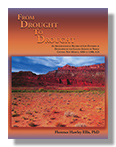 FROM DROUGHT TO DROUGHT
FROM DROUGHT TO DROUGHTHunting and Gathering Sites of the Galina Indians
By Florence Hawley Ellis, PhD
Photographs, Drawings, Diagrams, Bibliography, and Index
See PRAISE FOR THIS BOOK below. Order from Sunstone: (800) 243-5644 How did ancient Pueblo Indian farmers survive in the American Southwest when drought all but prevented agriculture? In 1971, archaeological research began on one of these commonly hypothesized but least actually known survival strategies. The area: Northern New Mexico; the people: one of the least studied, those of the Gallina culture; the time: the 1200s when extended drought drove people south out of Mesa Verde, Chaco and the Four Corners area (southwestern corner of Colorado, southeastern corner of Utah, northeastern corner of Arizona, and northwestern corner of New Mexico) in general toward areas of rivers or mountains in the hope of more rain.
The Gallina people established some of the highest camps known in the American Southwest where they spent the summer hunting, gathering, and possibly growing some corn or beans, returning home in the fall hopefully heavily laden with dry “jerky” meat, dried berries and medicinal plants. In the spring they would come back bearing camping equipment including pottery for cooking, eating and carrying water. They carefully hid these items probably intending to reuse them next year. But finally they ceased to return.
The pottery and camp sites waited quietly, unfound for centuries to be discovered and excavated by Dr. Ellis’s first excavation crew.
Florence Hawley Ellis, PhD, was one of the pioneer anthropologists of the American Southwest where she taught and published on her extensive excavations and related research in ethnology and such associated fields as tree-ring dating and pottery analysis. Her excavations include areas in Chaco Canyon, along the Chama, Rio Grande and Jemez river valleys and elsewhere in the Southwest. She published over 200 articles and monographs. She was trained at the University of Arizona and University of Chicago, and is also the author of San Gabriel del Yungue from Sunstone Press. Website: http://books.google.com/books?id=V2h0AAAAMAAJ&q=9780865341203&dq=9780865341203
Softcover:
8 1/2 x 11
ISBN: 978-0-86534-120-3
216 pp.,$29.95
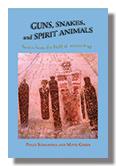 GUNS, SNAKES, AND SPIRIT ANIMALS
GUNS, SNAKES, AND SPIRIT ANIMALS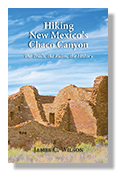 HIKING NEW MEXICO’S CHACO CANYON
HIKING NEW MEXICO’S CHACO CANYON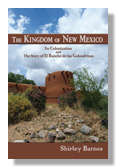 THE KINGDOM OF NEW MEXICO
THE KINGDOM OF NEW MEXICO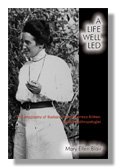 A LIFE WELL LED
A LIFE WELL LED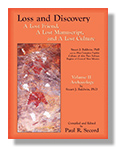 LOSS AND DISCOVERY: A LOST FRIEND, A LOST MANUSCRIPT, AND A LOST CULTURE
LOSS AND DISCOVERY: A LOST FRIEND, A LOST MANUSCRIPT, AND A LOST CULTURE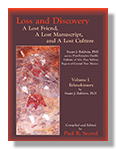 LOSS AND DISCOVERY: A LOST FRIEND, A LOST MANUSCRIPT, AND A LOST CULTURE
LOSS AND DISCOVERY: A LOST FRIEND, A LOST MANUSCRIPT, AND A LOST CULTURE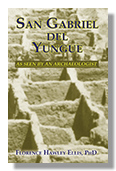 SAN GABRIEL DEL YUNGUE
SAN GABRIEL DEL YUNGUE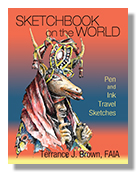 SKETCHBOOK ON THE WORLD
SKETCHBOOK ON THE WORLD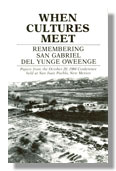 WHEN CULTURES MEET
WHEN CULTURES MEET